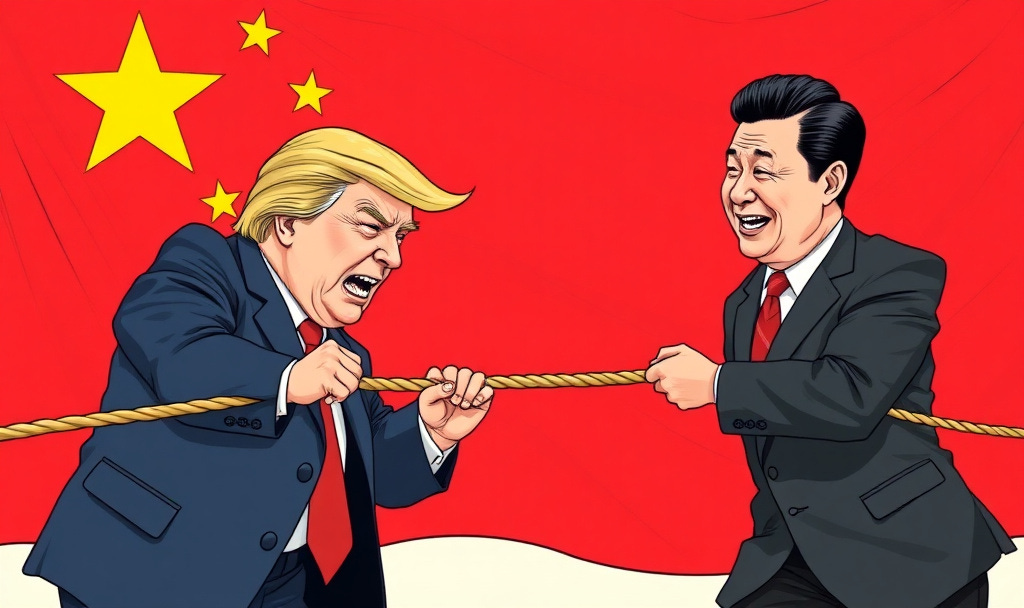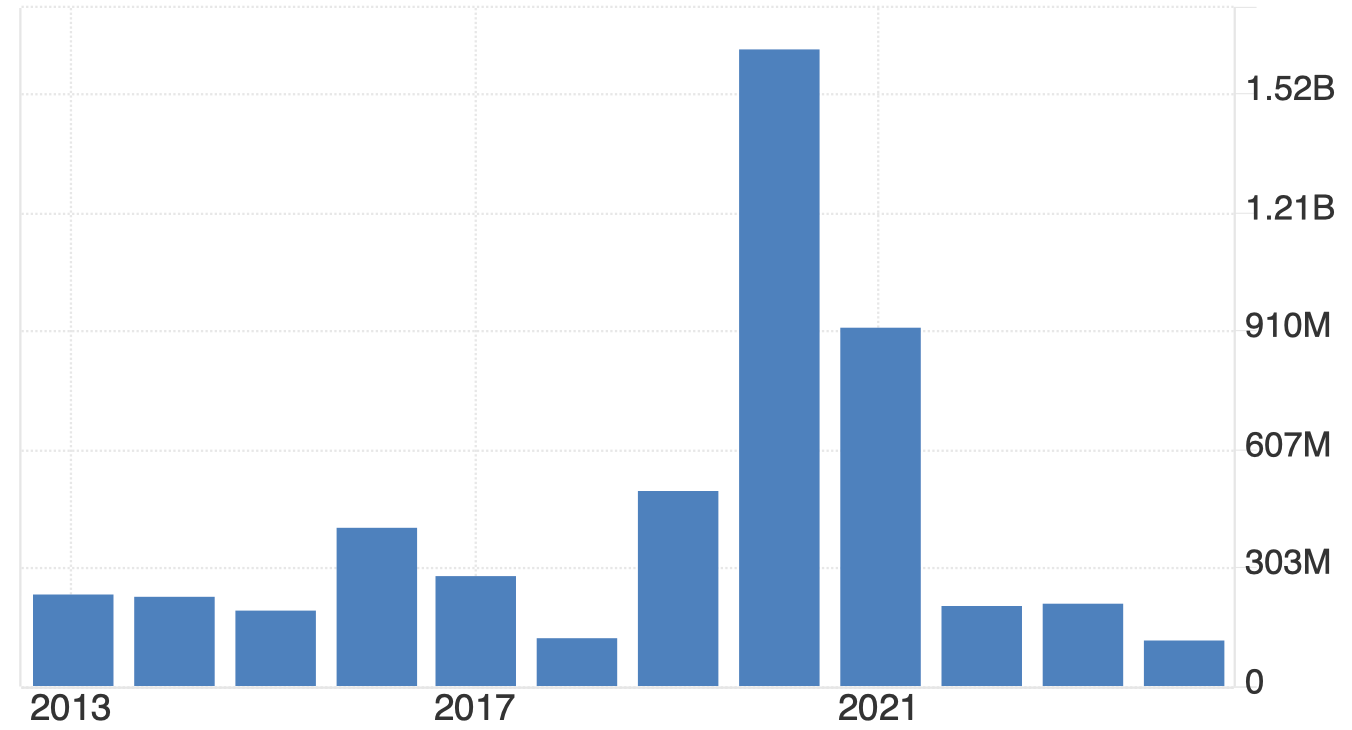As I was listening to Trump’s usual extravagant bragging about the great deal he wrung out of China thanks to his trade war, it sounded an awful lot like boasting that months of intense tariffs and business-jarring jolts between forward and reverse had finally strong-armed China into allowing him to remove his own tariffs and into going back to levels of trade we had with China before China felt the need to retaliate. I needed to spend time checking the details to see if the “win” was really that bad. Were there any gains here to merit all the misery for US businesses trying to navigate this storm? The following is what I found.
First, several mainstream publishers/broadcasters are calling this a historic win for President Xi.
CNN: “It’s clear that China’s leaders have stacked up another win for their hardball strategy with the United States.”
AP: “Deal between the US and China is undoing damage from a self-inflicted trade war.”
Axios: “Trump goes back to the future with China deal…. The deal … overlaps considerably with previous deals Trump and Xi have cut over the past six years.”
NY Times: “By withholding soybean purchases and rare-earth exports, China extracted relief from U.S. tariffs and delayed export controls, without conceding much in return.”
That’s what I thought as I listened to Trump’s boasting; but, of course, all these publishers are Trump’s regular critics, though their synopsis certainly matches my own recollections of the years that have elapsed since the start of Trump Trade Wars 1.0. In fact, the biggest thing I notice was that Trump’s boasting this past week about China’s promised increase in pork purchases from US farmers sounded like China was promising to do what it promised to do at the end of 1.0, which Trump had called back then “Phase One” as if something greater was to come.
The Trump Trade Wars’ history of fails
Let’s look at just the facts, rather than the publisher overviews that some will say come from the usual anti-Trump sources.
I argued in my article back during Trade War 1.0 that anyone who believed China would honor Phase One was a fool—not because China always goes back on its word but because it was promising to buy more pork from the US than all the pork it had previously bought from all over the world, including the US. To fulfill that agreement, China would either have to stuff double the pork down every blessed, pork-loving Chinese throat or order its own hog farmers to go out of business or let piles of stinking US pork rot on the docks—none of which was ever going to happen. None of which ever did happen.
Here’s what I wrote back then:
Purportedly, China agrees to buy more pork bellies (literally) and other pork parts, supposedly a lot more, but no one even comes close to agreeing publicly on how much a lot equates to -- not even the president and his men. The Chinese love only one thing more than rice and pork and that is soy beans for sauce; so, China agrees to buy more beans, too….
Not only has nothing has been signed, but the governments on both sides have stated Phase One (the No-Deal Deal) never will be signed by either President Trump or President Xi! (Talk about a no-deal deal!)….
President Trump’s expressed understanding is that China will be leaping from its original peak pork-and-beans level of about $24 billion worth of agricultural purchases up to $50 billion, but China’s own statement essentially said, “We’ll do the best we can based on market needs.” That leaves a Pacific-sized expanse between what China claims and what the Trump Admin. claims: [quoting another source within the article]
“But doubts are surfacing whether that’s even possible, bolstered by China’s reluctance to confirm the figure....
“Doing so would require a huge jump in China’s imports, potentially stretching its capacity to absorb the products…. Chinese officials repeatedly didn’t answer questions on the exact size of their commitment in a briefing Friday....
“The “$50 billion” figure offers Trump an attention-grabbing number to drive up enthusiasm for the deal in rural America. That’s a key political constituency for the president as he campaigns for re-election. It also helps him to defend a partial deal that leaves out many of the objectives he set when he initially launched the trade dispute....” (“No-Deal Trade Deal, Not a Done Deal!)
And, so, here we go again. In fact, you can see here what actually happened in pork purchases out of the last “no-deal deal” in the following chart (measured in dollars):
In 2020, the year after the big Phase One deal, China hyugely increased its pork purchases as promised to Trump; however, the number fell almost in half the next year under Biden and then dropped to smaller amounts in following years than it had purchased in each of the prior years. The numbers in the chart include frozen pork, so China stocked up on pork that could remain preserved then fed off of that in the following years under Biden.
In fact, Trump’s lie was so extravagant back then that it went far beyond what I quoted above because my article back then continued …
Finally, Trump’s braggadocio of $50 billion is given away as pure bluster by one simple fact: $50 billion is more than the U.S. exports in corn, soy, beef and pork to all the nations in the world. Looking at this promise from the US side, then, how are we even going to come up with that much in agricultural goods to export to China? We’d have to double our total exports of the things China buys in one year from the amount we sold [to the entire world] at our own peak production. China cannot agree to buy something the US doesn’t even have to sell….
So, it was all baloney, not pork. China never did reach $50 billion in ag purchases of the items listed in the original no-deal deal.
Would Trump ever have managed to hold China to such a bizarre bargain? Not likely, since 1) it was impossible without starving ourselves because we couldn’t even produce that much surplus to export, even if we cut out all other global buyers, and 2) he has been notably silent about that deal’s failure under Biden, even though he normally loves to blame everything on Biden. I think he knew, just as I did at the time, that the amount he claimed China was promising was WAY more than it would ever even be capable of buying or than we would be capable of selling, but it looked great on paper; so, it made the kind of extravagant boast Trump loves (all hot air)—just as it does today, except now those listeners who are not willing to be beguiled for the sake of believing in their man know where this kind of deal will end up. (Hopefully, they do.)
This all means the biggest part of the current deal was that China is once again agreeing to do what it already agreed to do and then failed to do. Obviously, the same natural limitations on what China actually can do mean that Lu Si will pull the football on Charlie Brown again. A deal that sounds too good to be true because it is not even possible is certainly too good to be true. However, Trump doesn’t care that that the same kinds of promises all over again are not true because they are a lovely sounding package to sell to American farmers and Trump voters, just as they were in 2020.
I was right in saying back then that the deal would never actually happen, so think twice before saying I’m just carping about Trump this time. Fool you once, shame on Trump. Fool you twice, shame on you. (Hopefully, those so inclined to be fooled are a shrinking minority, and I rather trust that the audience that still exists on this humble platform has hung around because it is not among the willingly beguiled anyway.)
With the overview from several mainstream publications, let’s now dive into the details to see what really happened in Trump Trade War 2.0.




